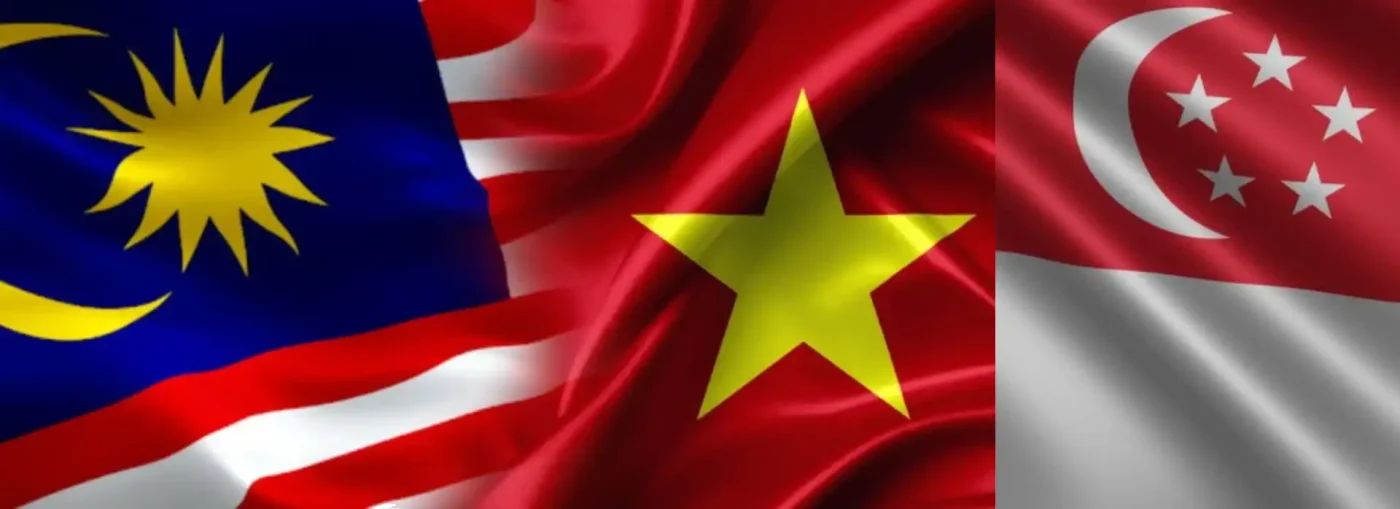At the 46th ASEAN Summit in Kuala Lumpur, a landmark agreement was signed on May 26, 2025, marking a significant step toward regional energy integration. Vietnamese Prime Minister Phạm Minh Chính, alongside his Malaysian and Singaporean counterparts Anwar Ibrahim and Lawrence Wong, witnessed the formalization of a tripartite cooperation deal focused on exporting renewable energy from Vietnam to Malaysia and Singapore. This pact, involving key energy consortia from the three nations, underscores a shared commitment to sustainable energy solutions and positions Southeast Asia as a potential global leader in cross-border clean energy trade.
A Milestone for ASEAN Energy Connectivity
The agreement, signed during high-level meetings at the ASEAN Summit, represents the first concrete step in implementing tripartite cooperation among Vietnam, Malaysia, and Singapore in the energy sector. It aims to harness Vietnam’s abundant renewable energy potential—particularly offshore wind power—to produce clean electricity for export. The deal involves Malaysia’s MY Energy Consortium, a partnership between Tenaga Nasional Bhd (TNB) and Petroliam Nasional Bhd (Petronas), collaborating with Vietnam’s Petrovietnam Technical Services Corporation (PTSC), a subsidiary of the Việt Nam National Industry–Energy Group (Petrovietnam), and Singapore’s Sembcorp Utilities Pte Ltd, a unit of Sembcorp Industries.
The initiative focuses on exploring the feasibility of transmitting clean electricity from Vietnam to Malaysia and Singapore via submarine cables, connecting to Peninsular Malaysia’s national grid. Additional considerations include integrating power sources and storage systems to ensure grid stability. This project not only enhances regional energy connectivity but also aligns with the long-standing vision of an ASEAN Power Grid—a unified energy network designed to promote sustainability and flexibility across member states.
Vietnam’s Ambition as a Renewable Energy Hub
Vietnam, as an ASEAN member, is positioning itself as a regional hub for renewable energy. With vast potential for offshore wind and other clean energy sources, the country is keen to meet Southeast Asia’s growing energy demands while adhering to commitments on emissions reduction. This trilateral agreement is a cornerstone of Vietnam’s broader strategic vision, which emphasizes green growth and sustainable development. By leveraging its natural resources, Vietnam aims to create high-quality employment opportunities and unlock new economic prospects through energy exports.
The partnership also reflects Vietnam’s dedication to fostering a low-emission energy ecosystem within ASEAN. Prime Minister Phạm Minh Chính has repeatedly highlighted the importance of clean energy development as a national priority, aligning with global trends toward carbon reduction. This deal could serve as a model for other ASEAN nations, demonstrating how collaborative efforts can address both economic and environmental challenges simultaneously.
Technical and Strategic Implications
The technical scope of the agreement involves a detailed feasibility study to assess the viability of exporting electricity through submarine cables—a complex and costly endeavor that requires close coordination between the involved parties and government agencies. The project’s success hinges on navigating regulatory approvals and ensuring that the infrastructure can withstand the region’s environmental and geopolitical challenges. While the exact timeline and financial details remain under wraps, the initiative is expected to involve significant investments, potentially in the range of billions of Vietnamese Dong (exact figures to be confirmed, with conversions to USD provided upon release based on exchange rates at the time of publication).
Strategically, this agreement positions the three nations at the forefront of energy innovation in Southeast Asia. For Malaysia and Singapore, importing clean energy from Vietnam offers a pathway to diversify their energy mix and reduce reliance on fossil fuels. Singapore, with its limited landmass for large-scale renewable projects, stands to benefit significantly from accessing Vietnam’s offshore wind resources. Meanwhile, Malaysia’s role as a transit point for submarine cables could enhance its status as a regional energy connector.
Broader Impact on ASEAN’s Energy Landscape
Beyond the immediate parties, the trilateral agreement has far-reaching implications for ASEAN’s energy landscape. The vision of an ASEAN Power Grid, first proposed decades ago, has long been hampered by technical, financial, and political barriers. This deal represents a tangible step toward overcoming those obstacles, offering a scalable model for cross-border energy cooperation. If successful, it could inspire similar initiatives across the region, linking other ASEAN nations into a cohesive energy network.
The partnership also aligns with global efforts to combat climate change. Southeast Asia, with its rapidly growing economies and populations, faces significant challenges in balancing energy demands with environmental sustainability. By prioritizing renewable energy trade, Vietnam, Malaysia, and Singapore are signaling their intent to lead by example. The initiative could attract international investment and technical expertise, further accelerating the region’s transition to a low-carbon future.
Challenges and Uncertainties Ahead
Despite the optimism surrounding the agreement, several challenges loom on the horizon. The development of submarine cable infrastructure is notoriously complex, requiring substantial capital and technical know-how. Environmental concerns, such as the impact on marine ecosystems, must also be addressed to ensure the project adheres to sustainability principles. Additionally, regulatory harmonization across the three countries will be critical to avoiding delays or disputes during implementation.
Geopolitical dynamics within ASEAN could also influence the project’s trajectory. While the current agreement enjoys strong political backing, shifts in leadership or regional priorities may introduce uncertainties. Analysts suggest that sustained commitment from all parties will be essential to overcoming these hurdles, though no specific risks have been confirmed at this stage. The involved consortia have pledged to work closely with government agencies to navigate these challenges, but the path forward remains a work in progress.
Public and Regional Reactions
Initial reactions to the agreement have been largely positive, with energy experts and environmental advocates praising the move as a bold step toward regional sustainability. In Vietnam, the deal has been hailed as a boost to national pride, reinforcing the country’s growing influence within ASEAN. Public sentiment in Malaysia and Singapore also appears supportive, with many viewing the initiative as a pragmatic solution to energy security concerns.
However, some stakeholders have raised questions about the project’s economic implications, particularly for local communities in Vietnam where renewable energy infrastructure will be developed. Ensuring that the benefits of green growth are equitably distributed will be a key consideration for policymakers. As the feasibility studies progress, greater transparency on costs, timelines, and community impacts will likely be needed to maintain public trust.
A Vision for the Future
As Vietnam, Malaysia, and Singapore embark on this ambitious journey, the trilateral agreement stands as a testament to the power of regional cooperation in addressing shared challenges. If successful, the project could redefine Southeast Asia’s energy landscape, paving the way for a more integrated and sustainable future. For now, the focus remains on laying the groundwork—both technically and politically—to turn this vision into reality. As the initiative unfolds, it will undoubtedly serve as a litmus test for ASEAN’s ability to unite on pressing global issues like climate change and energy transition.
With the eyes of the region and the world watching, the coming years will reveal whether this partnership can deliver on its transformative promise, setting a precedent for cross-border collaboration in the pursuit of a greener tomorrow.
















